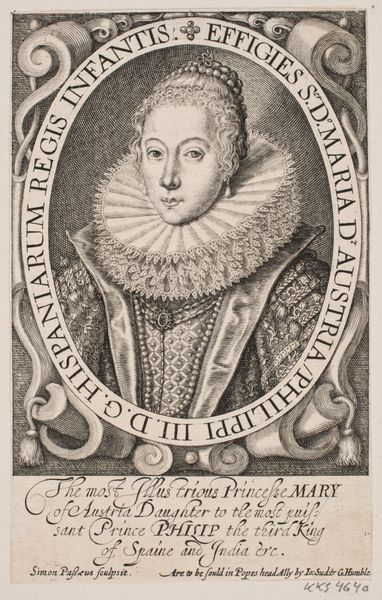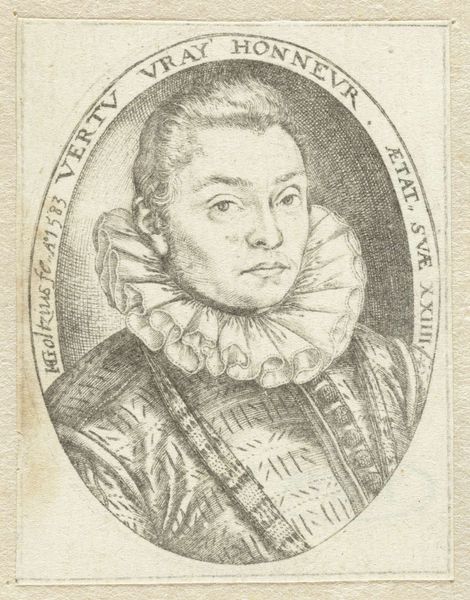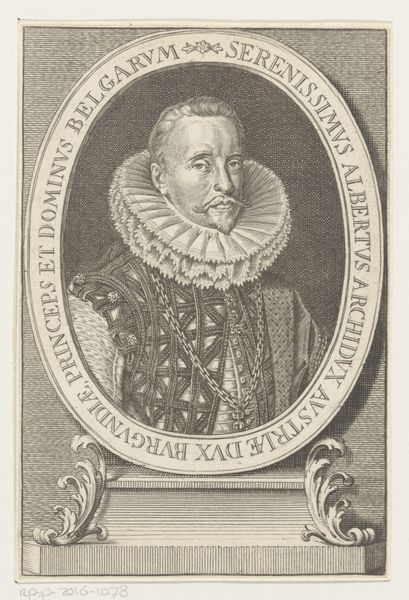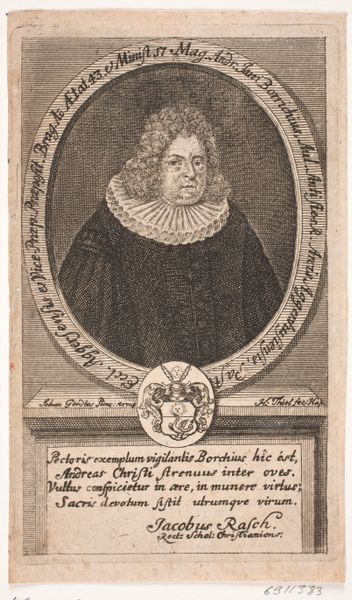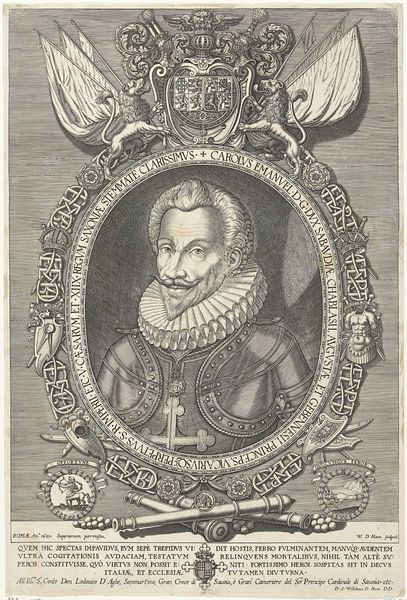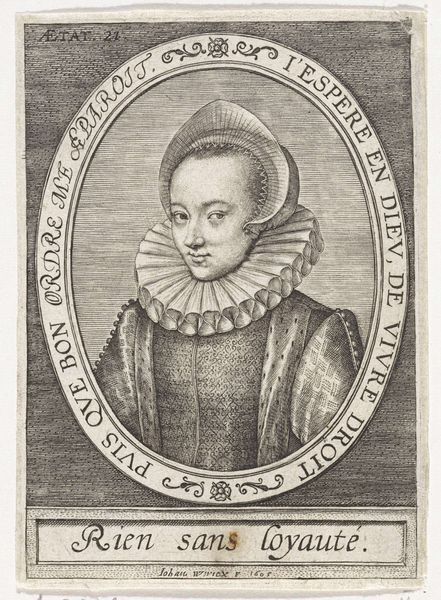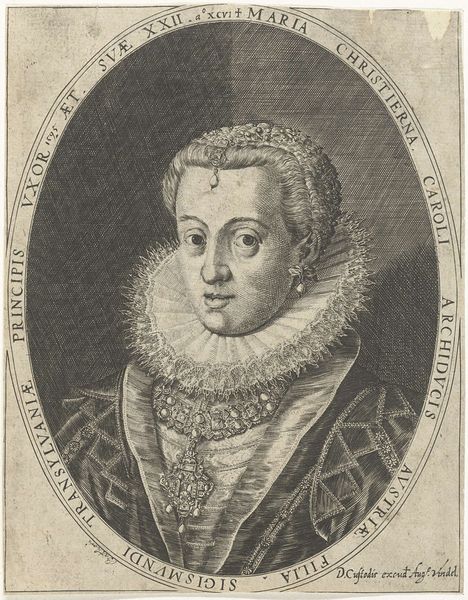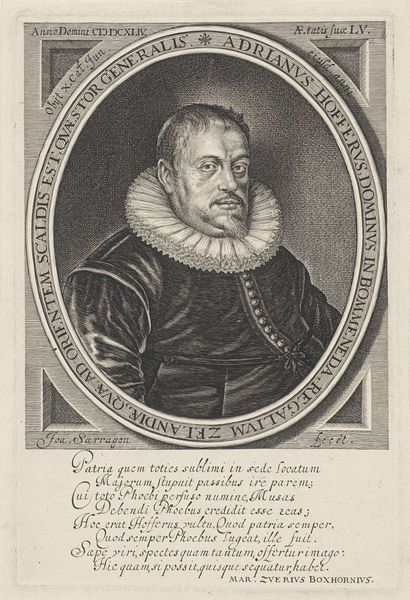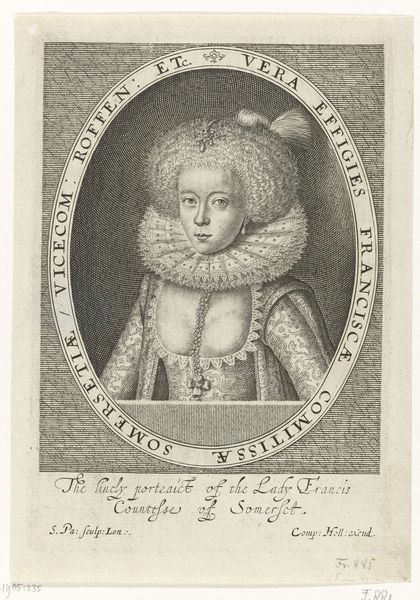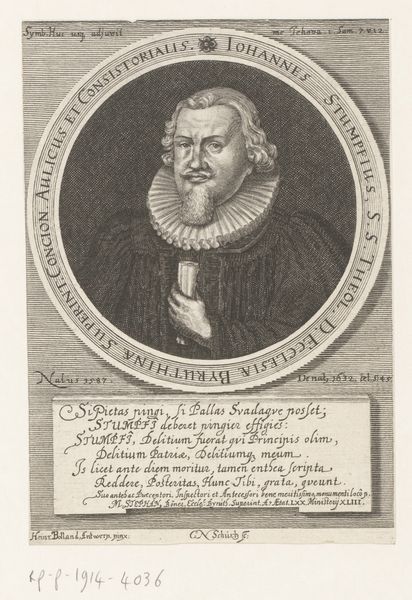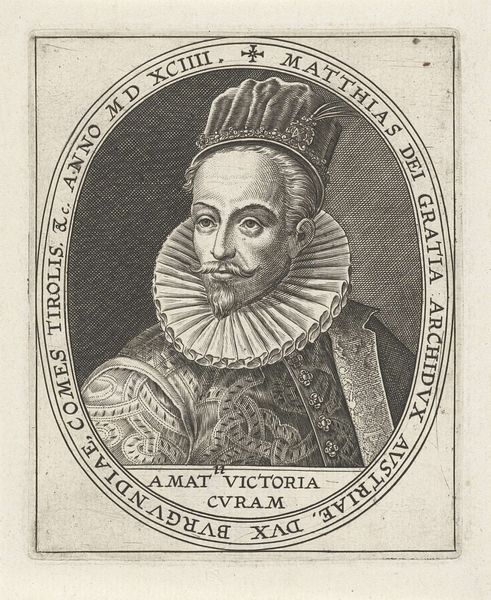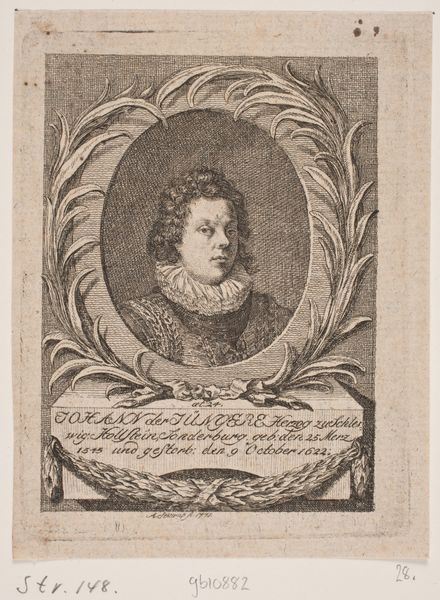
engraving
#
portrait
#
baroque
#
line
#
engraving
Dimensions: height 165 mm, width 109 mm
Copyright: Rijks Museum: Open Domain
Curator: Isn't she lovely? This is "Portret van Maria Anna van Oostenrijk," or Portrait of Maria Anna of Austria, completed as an engraving by Simon van de Passe in 1622. It’s currently held in the Rijksmuseum. Editor: It has an air of quiet regality, but a touch melancholy, too, don't you think? It's small, intricate and gives a sense of the sitter's composed nature...although she also appears trapped, perhaps due to the elaborate lace collar surrounding her neck. Curator: That collar is a statement, a visual signifier of wealth and status in the Baroque period. It represents much more than mere ornamentation; it is, I think, like an armour of sorts. Look at the layers of her ornamentation. The pearl necklace, the jeweled dress and that frame of baroque extravagance. Editor: Exactly. Those elements tell us a lot. Pearls, for instance, often symbolize purity and status, frequently seen in portraits of aristocratic women. I think her downcast gaze is less sadness, more acknowledgement of societal expectations...burden, really. Even the elaborate frame, adorned with inscriptions, feels like it's hemming her in. Curator: I think your intuition is right. Even in this print form, which allows for wider circulation, she remains fixed within prescribed boundaries. Van de Passe expertly used the engraving medium—emphasizing line, which contributes to the somewhat constrained feel of the overall image. The engraver makes great use of light, illuminating her youthful face and casting light over the very regal adornments. The intention is to create a symbolic rendering as well as an accurate likeness. Editor: Right! It’s a very specific presentation of power. I'm struck by how this single image holds so many layers: societal expectation, family legacy, the pressures of royal lineage... You’ve provided valuable historical perspective! Curator: It's interesting how art can convey so much! We tend to judge by contemporary metrics, but need always keep in mind what came before us, even the smallest historical artefact. Editor: True! By looking at it a bit closer, Maria Anna's likeness really transcends a static portrait; it becomes an accessible window into a complex web of cultural meanings.
Comments
No comments
Be the first to comment and join the conversation on the ultimate creative platform.
